7 Best Grass Types for Maryland
BY AMY ADAMS | JUNE 6TH, 2023 | LAWN CARE, MARYLANDFrom the rolling hills of Western Maryland to Chesapeake Bay’s waterfront, Maryland has it all – mountains, forests, beaches, and so much more. But aside from the state’s natural beauty, our lawns also play a vital role in making our outdoor space more charming.
Understanding the seven best grass types for Maryland is one way for homeowners to contribute to maintaining the state’s beauty. This way, you can choose a well-adapted grass type that can transform an ordinary lawn into a verdant retreat.
In this article, we’ll cover:
- Warm-Season vs. Cool-Season Grasses
- 7 Warm-Season and Cool-Season Grasses for Maryland
- FAQ About Maryland Grass Types
Warm-Season vs. Cool-Season Grasses
Living in Maryland has its positives and negatives when it comes to our landscaping. Being in a transition zone means we have hot summers and cold winters. We are far enough south to be able to grow warm-season grasses, and we are also far enough north that we can grow cool-season grasses as well.
Let’s differentiate between these two types of grasses:
Warm-season grasses: You will mostly find these types of grasses in the southern states. They originated in the subtropics and like mild winters and hot summers. Warm-season grasses will be at their greenest with temperatures 80-95 degrees Fahrenheit.
Cool-season grasses: These grasses prefer cold winters and warm summers along with regular intervals of rain. They grow the most when temperatures are 60-75 degrees Fahrenheit.
While we may have more grass options than our neighbors to the north or south, establishing a yard can be very challenging since we don’t live in an optimal climate for either type of grass. But understanding the characteristics of these seven grasses can help you choose the best variety for your Maryland home.
7 Warm-Season and Cool-Season Grasses for Maryland
1. Fine Fescue
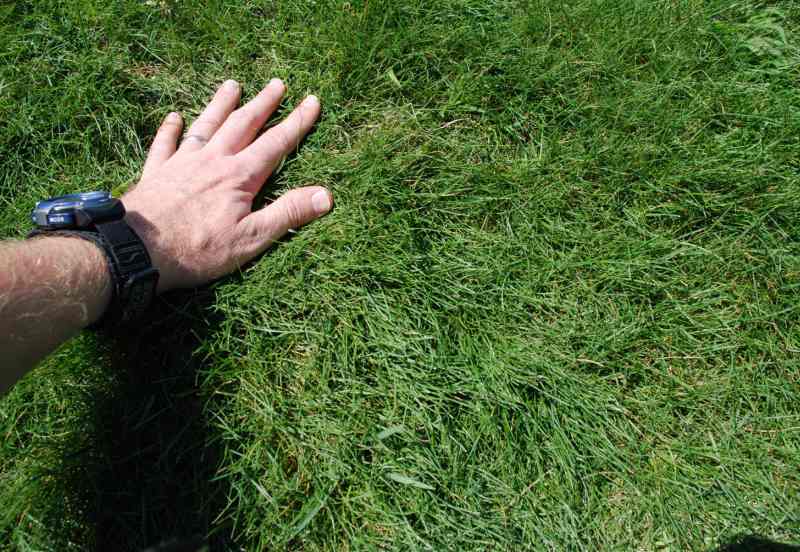
Photo Credit: Aaron Patton / Purdue’s Turfgrass Science Program
Fine fescue is a low-maintenance turf that doesn’t need much fertilizing, watering, or mowing, making it a fantastic option for homeowners who don’t have time to maintain their lawns. It can even go up to four weeks without rain before needing to be watered. However, it is prone to buildup and will need periodic dethatching.
There are five major species of fine fescues:
- Strong creeping red fescue: Medium green, good to excellent shade tolerance
- Slender creeping red fescue: Light to medium green, good to excellent shade tolerance
- Chewings fescue: Medium green, excellent shade tolerance
- Hard fescue: Dark gray-green to blue-green, good shade tolerance
- Sheep fescue: Powdery blue-green, fair to good shade tolerance
All five species are often sold as a blended seed mix for best results but also can be blended with Kentucky bluegrass and ryegrass. Of all the turfgrasses, fine fescue is the most shade tolerant – making it an excellent option if you have lots of trees, bushes, or ground coverings. It also likes difficult soils like clay, rocky, and sandy soils.
Classification: Cool-season grass
Spreads by: Bunch-type (except for creeping red fescues, which possess rhizomes)
Shade tolerance: Moderate to high
Drought resistance: Moderate to high
Foot traffic tolerance: Low to moderate
Maintenance needs: Low mowing frequency
Mowing height: 1.5-3 inches
Potential for disease: Moderate
Potential for pests: Moderate
Soil pH: 5.5-6.5
Soil type: Prefers well-drained soil but tolerates infertile, sandy soil
Other notes: Often mixed with other cool-season grasses, especially in sun/shade mixes
2. Kentucky Bluegrass
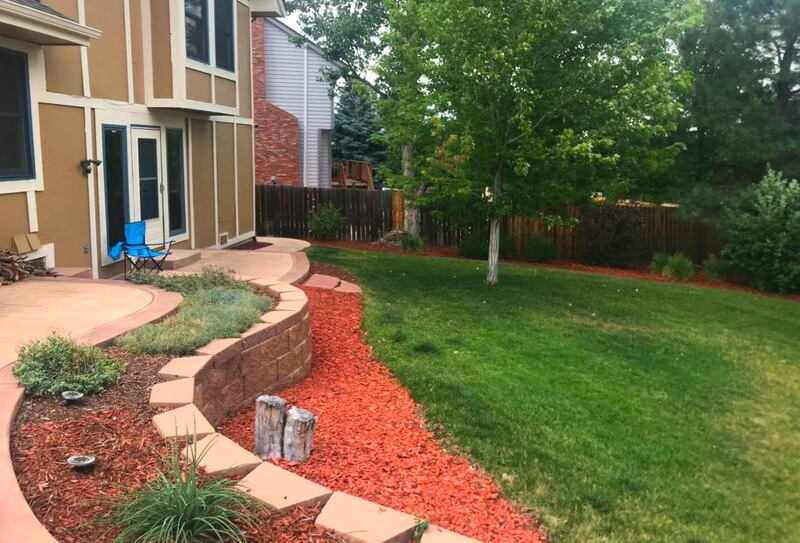
Photo Credit: Brenda Ryan / Wikilawn
With a dark green boat-like shaped leaf, Kentucky bluegrass is the most widely used cool-season grass in the country. Despite its needy nature, the grass’s durability and fine to medium texture are the reasons it’s often used for home lawns, athletic fields, and golf courses.
A shallow root system is to blame for Kentucky bluegrass’s neediness as it doesn’t allow for easy water absorption. As a result, it calls for regular watering. It’s susceptible to disease and buildup that will require dethatching.
This high-maintenance grass may not be suitable for all Maryland homeowners, but the reward is well worth it if you’re willing to put in the effort. Plus, this barefoot-friendly grass is durable enough for the kiddos and pets to run around and play sports.
Classification: Cool-season grass
Spreads by: Rhizomes
Shade tolerance: Low to moderate — prefers full sun
Drought resistance: Moderate, but will survive by going dormant
Foot traffic tolerance: Low to moderate, but recuperates well
Maintenance needs: Moderate mowing frequency; a high-maintenance grass
Mowing height: 2-3 inches
Potential for disease: Moderate to high
Potential for pests: Moderate to high
Soil pH: 6-7
Soil type: Good drainage, fertile
Other notes: Under optimal conditions, Kentucky bluegrass cultivars have the capacity to create a dense and lush lawn. The level of shade tolerance and drought resistance vary among different cultivars, but newer cultivars are hardier and tend to be more resistant to diseases. This grass is commonly mixed with other species, like tall fescue, to achieve desired characteristics and enhance overall lawn quality.
3. Perennial Ryegrass
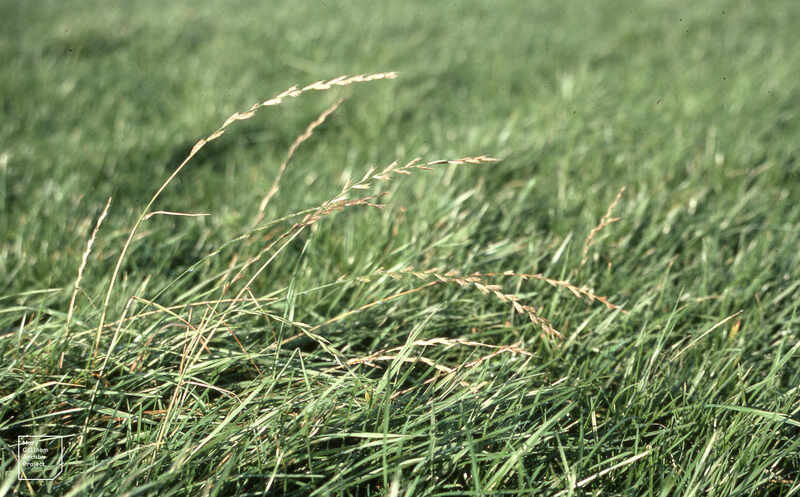
Photo Credit: Dr Mary Gillham Archive Project / Flickr / CC BY 2.0
This versatile turf is used in residential yards, parks, playgrounds, and golf courses. Perennial ryegrass is a sharp-pointed, fine-textured, bright green grass with a leaf that folds at the bud. It can tolerate some shade but prefers to soak in the sun.
Since it germinates quickly, perennial ryegrass is often used in seed mixtures. However, it should not be more than 5-15% of the mixture due to its short life span and disease problems. For this reason, having a pure perennial ryegrass lawn is not a good idea due to its susceptibility to disease.
Classification: Cool-season grass
Spreads by: Bunch-type grass
Shade tolerance: Low — prefers full sun
Drought resistance: Low (summer dormancy in some areas)
Foot traffic tolerance: High — but has a poor recuperative ability
Maintenance needs: High — needs frequent watering; moderate mowing requirement, depending on cutting height (lower cutting heights require more frequent mowing)
Mowing height: 2-3 inches
Potential for disease: High, especially in areas with hot, humid summers
Potential for pests: Low resistance
Soil pH: 6-7
Soil type: Good drainage, high fertility
Other notes: Most often mixed with Kentucky bluegrass and fine fescue in a cool-season mix; well known for its excellent striping ability, low mowing tolerance (reel mower fans, this one’s for you), and rapid germination rate (four to seven days). Needs moderate levels of fertilizer.
4. Tall Fescue
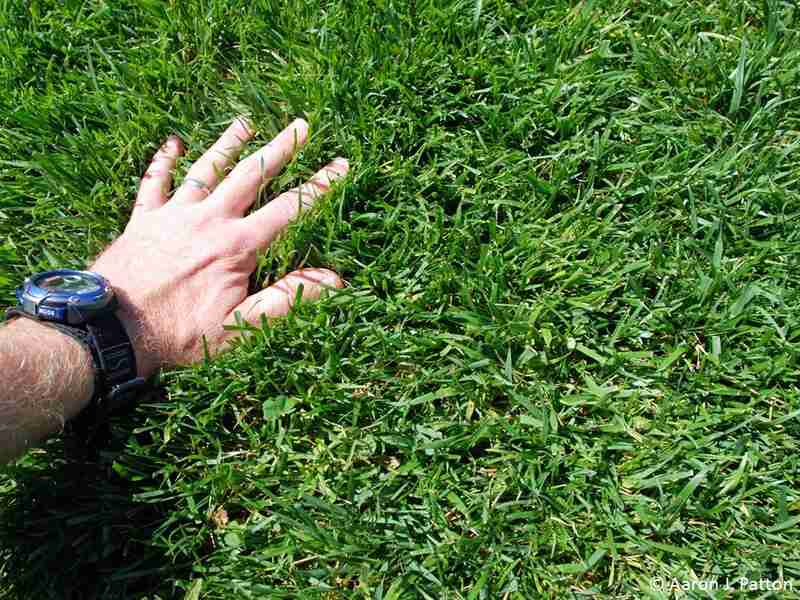
Photo Credit: Aaron Patton / Purdue’s Turfgrass Science Program
A fast-growing versatile grass, tall fescue has an extensive root system, making it an excellent drought-resistant option. It has a medium to rough texture with a needle-like tip and is purple at the base of the stem. It grows the most during spring and fall while becoming semi-dormant during the hot, dry summer months.
Tall fescue’s roots grow deeper than most other cool-season grasses, often 2 to 3 feet deep, allowing it to be tolerant of our hot Maryland summers. Its weather tolerance is also what allows it to maintain its deep green color much later into the season than other cool-season grasses.
Summer stressors and bunch-type growth may cause thin growth patterns in a tall fescue yard resulting in a need to reseed your lawn annually.
Classification: Cool-season grass
Spreads by: Bunch-type grass
Shade tolerance: Moderate to high
Drought resistance: Moderate
Foot traffic tolerance: Moderate, but low ability to recuperate from wear
Maintenance needs: Moderate – it has a fast rate of growth, so plan to mow often
Mowing height: 2-4 inches (Check your cultivar and state recommendations. Many tall fescue lawns grow best when they’re mowed on the tall side.)
Potential for disease: Low to moderate under proper management conditions
Potential for pests: Low to moderate resistance
Soil pH: 5.5-6.5
Soil type: Prefers well-drained, fertile soil but will tolerate a wider range of soil conditions
Other notes: To address bare spots and thinning areas in your lawn, you should reseed every few years. Avoid planting outdated varieties like Kentucky-31 and opt for “turf-type” tall fescue (TTTF) instead. For the best chances of achieving a robust lawn, consider seed blends containing multiple TTTF cultivars.
5. Bermudagrass
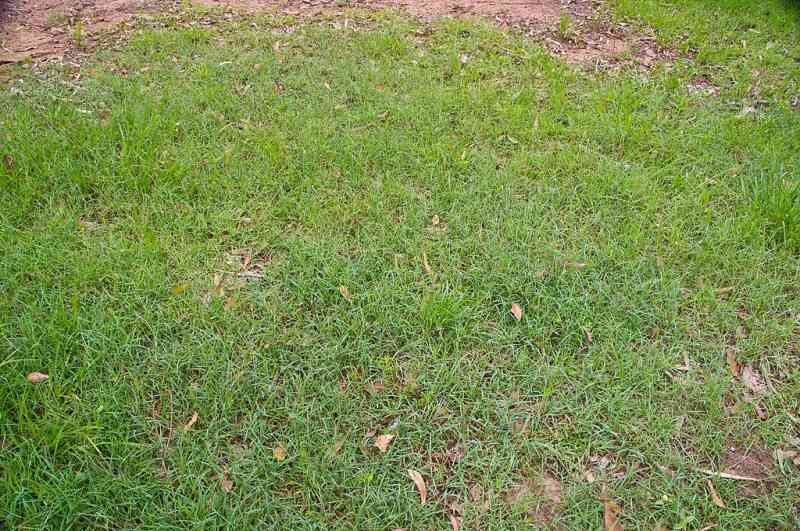
Photo Credit: John Robert McPherson / Wikimedia Commons / CC BY-SA 4.0
With blades that fan horizontally, this fine-textured grass creates a soft, dense turf perfect for pets and children to run and play. Its fast-growing nature makes it resistant to weeds and other pests.
Bermudagrass loves the sun and high temperatures making it the perfect summertime grass for your Maryland yard. However, it does not tolerate cold temperatures well. Residents living in the northern parts of the state may want to consider cool-season grass instead.
It can be a high-maintenance grass because it requires frequent mowing and fertilizing. But the beautiful carpet of green bermudagrass is well worth the time and effort.
Classification: Warm-season grass
Spreads by: Stolons and rhizomes
Shade tolerance: Poor — needs full sun
Drought resistance: High
Foot traffic tolerance: High
Maintenance needs: Moderate to high — due to its fast growth rate, you’ll have to mow it frequently; develops thatch easily; needs regular fertilization
Mowing height: 1-2 inches
Potential for disease: Moderate resistance to disease, although leaf spot, brown patch, and dollar spot are common
Potential for pests: Low resistance
Soil pH: 6-6.5
Soil type: Tolerates most soil types
Other notes: Bermudagrass displays aggressive spreading through its above-ground stolons and below-ground rhizomes, giving it a competitive edge against numerous weed species. However, this trait also can present challenges as it tends to become invasive. It frequently infiltrates flower beds through underground tunnels and extends its reach into adjacent lawns.
6. St. Augustinegrass
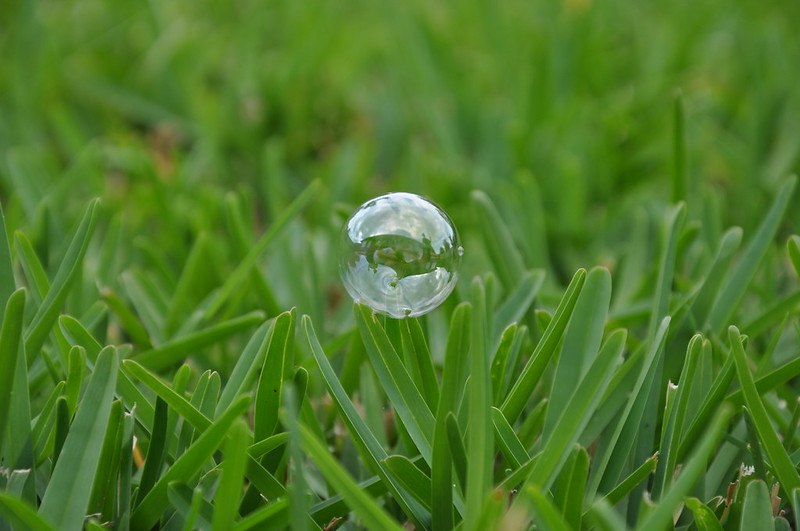
Photo Credit: Jay Morgan / Flickr / CC BY-ND 2.0
This high-maintenance grass may not be the best option for some Maryland residents due to its lack of cold tolerance. However, St. Augustinegrass could be a great option for homeowners living along the Eastern shore, as it can be planted in sandy soils and has a high salt tolerance.
This warm-season grass has a coarse, spongy texture with broad-rounded tips. And since St. Augustinegrass can be susceptible to insects and diseases, particularly fungi, homeowners should give it TLC and look out for any signs of distress.
Its fast-growing blue-green blades are quick to establish but will need lots of moisture, so be sure to water regularly. Also, St. Augustinegrass is not tolerant of heavy traffic, so you may want to consider another type of grass if you have children or pets that will often be playing in the yard.
Classification: Warm-season grass
Spreads by: Stolons
Shade tolerance: Moderate shade tolerance, among the highest of any warm-season grass; some cultivars are more shade tolerant than others
Drought resistance: Moderate
Foot traffic tolerance: Moderate
Maintenance needs: Moderate to high mowing frequency
Mowing height: 2.5-4 inches (mow dwarf varieties from 2.5-3 inches; standard cultivars from 3-4 inches; mow tall in shade)
Potential for disease: Low to moderate resistance
Potential for pests: Low resistance
Soil pH: 6-7.5
Soil type: Tolerates many soil types; prefers moderately fertile and moist (not waterlogged) soils; not a highly drought-tolerant grass; doesn’t tolerate soil compaction
Other notes: Native to coastal areas across the world and prefers moist soils and mild winters; will thrive in more inland areas provided growing conditions are met; good salt tolerance; will go dormant during winter in all but the southernmost regions
7. Zoysiagrass
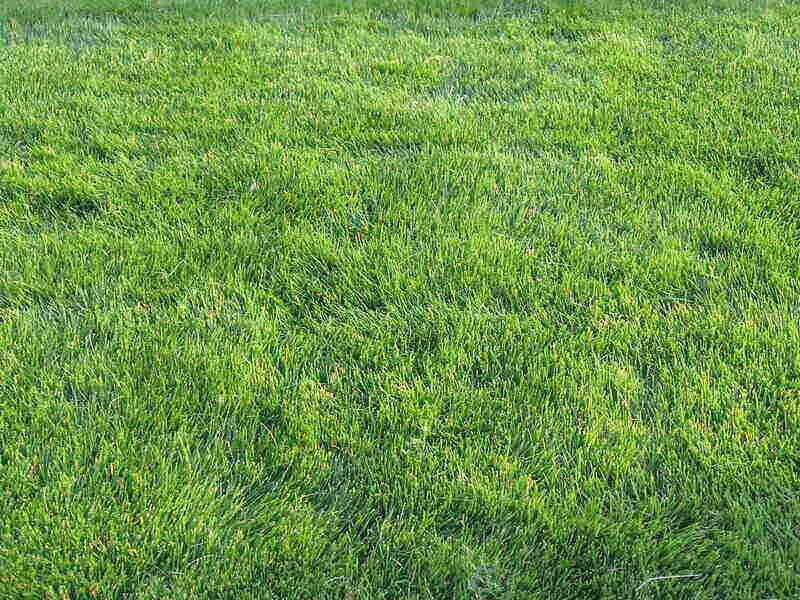
Photo Credit: Russbach at the English Wikipedia / Wikimedia Commons / CC BY-SA 3.0
For the warmer southern regions of Maryland, Zoysiagrass may be a better alternative to the more traditional tall fescue typically seen throughout the state. As a warm-season grass, it will go dormant from fall through mid-May, but it can be planted in sandy soils.
Once established, Zoysiagrass is more resistant to diseases. It’s also more drought tolerant, thanks to its deep roots. Its thick and dense growth will also help prevent weeds from poking through and taking up residency.
Zoysiagrass blades are fine to medium texture and form a soft, cushiony yard perfect for youngsters and pets to run and play.
Classification: Warm-season grass
Spreads by: Stolons and rhizomes
Shade tolerance: Tolerates light to moderate shade
Drought resistance: High
Foot traffic tolerance: High
Maintenance needs: Low to moderate nitrogen requirement; moderate mowing frequency (cut with sharp mower blade; mow taller if the grass is in partial shade)
Mowing height: 1-2.5 inches
Potential for disease: Moderate resistance
Potential for pests: Moderate resistance
Soil pH: 6-6.5
Soil type: Well-draining soil, but some cultivars are more tolerant of a wide range of soils than others
Other notes: This warm-season grass is moderately salt tolerant
FAQ About Maryland Grass Types
Fine fescue is your best bet for a shady lawn. They need a bare minimum of two hours of direct sunlight compared to the four hours tall fescues need. But remember, fine fescue does not handle heavy traffic well.
Tall fescue is the recommended grass for homeowners with a lawn that receives a minimum of four hours of direct sunlight each day.
Tall fescue (90-95%) with a mixture of Kentucky bluegrass (5-10%) is your best option for a high-traffic lawn.
Choose Plant and Grass Varieties for Your Maryland Landscape
Since we live in a transition zone, keeping a healthy landscape can be quite challenging. Knowing that Maryland falls into USDA zones 5b to 8a also can help you understand what you need to do for your lawn during the spring and fall months. This way, you can have a lawn that will have all your neighbors envying your yard.
Whether you live in Baltimore, Frederick, Ocean City, Annapolis, or other towns in Maryland, let us help you find a local lawn care pro who can help make your lawn look its best.
Main Photo Credit: Old Treasury Building & Maryland State House / Bestbudbrian / Wikimedia Commons / CC BY-SA 4.0